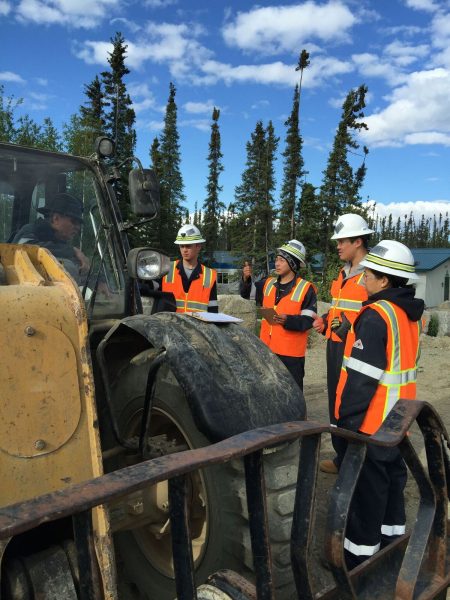Mining and petroleum training program transferred to UAF
October 13, 2016
Debbie Carter
907-474-5406
The Mining and Petroleum Training Service, a workforce development program that has
trained more than 100,000 Alaskans, is now part of the University of Alaska Fairbanks.
The transfer from the University of Alaska Statewide Workforce Programs to the University
of Alaska Fairbanks Cooperative Extension Service was completed in August. University
of Alaska President Jim Johnsen approved the transfer after a systemwide transformation
team recommended moving workforce programs to the campuses.
Fred Villa, the UA system's associate vice president for workforce programs, said,
“The UAF's Cooperative Extension Service is a wonderful fit with MAPTS; both have
a significant role in producing educational and training opportunities across the
state for students with programs related to natural resources.”
Executive Director Bill Bieber will continue to direct the program and is enthusiastic
about the new alliance with Extension, which also has a noncredit workforce development
program and is providing administrative support.

The University of Alaska created the program in 1979 to provide training, development and consulting services for resource industries. Training staff conduct an assortment of mandatory training and worker certification courses for mining and petroleum industries, federal, state and municipal agencies, and industrial health and safety organizations.
Bieber says MAPTS has an enviable 85 percent placement rate for its underground and surface mining trainings, which take place at the Mining and Petroleum Training Service Facility, about 30 miles east of Delta Junction. He said the placement rate is high because most students already have job offers that are contingent on completing the training.
Bieber said the hands-on training of Alaskans was sought by the mining industry in order to offset high turnover rates from employees outside the state.
“Often times new employees from Outside have difficulty adjusting to the dramatic climate changes and being so far removed from family and friends,” he said.
At the mine training facility, students practice on simulators and then operate equipment similar to what they will use when they will be employed. The training covers employability and life skills such as balancing work and family life, budgeting and community involvement.
Bieber said the training is unique in the United States. “We are the only training program that provides an all-encompassing underground mine training experience that includes a remote camp site.’’
The facility intentionally simulates a remote camp with 10-hour training days and no outside contact allowed, so students prepare for the rigors of working long hours away from home. The 50-acre site includes a 32-bed camp, two underground classrooms, shops, an underground office complex and 6,000 feet of mine drift. The $3 million simulators and the housing are on loan through a continuing partnership with Canada’s Yukon College Centre for Northern Innovation in Mining.
The camp offered five four-week underground training sessions this year and one two-week surface mining training. In November, it will also provide a two-week roustabout training at the facility for an oilfield services company. Bieber said the program would like to present this training to more international clientele. It has offered training previously in Russia and Aruba.
The program is acquiring the assets of the Delta Mine Training Center, an educational 501(c)(3) nonprofit organization. MAPTS is making its last payment to the center in December out of revenues from its trainings. Operations are currently supported by a three-year U.S. Department of Labor training grant, which ends in 2017. The land is leased from the Alaska Department of Natural Resources.
Mandatory mining safety training is offered in Anchorage, Juneau, Fairbanks and Soldotna, where the program is based. Petroleum classes include well control, pressure control well intervention, various compliance classes and mechanical maintenance. A staff of 12 includes eight instructors with decades of experience in the mining and petroleum industry.


